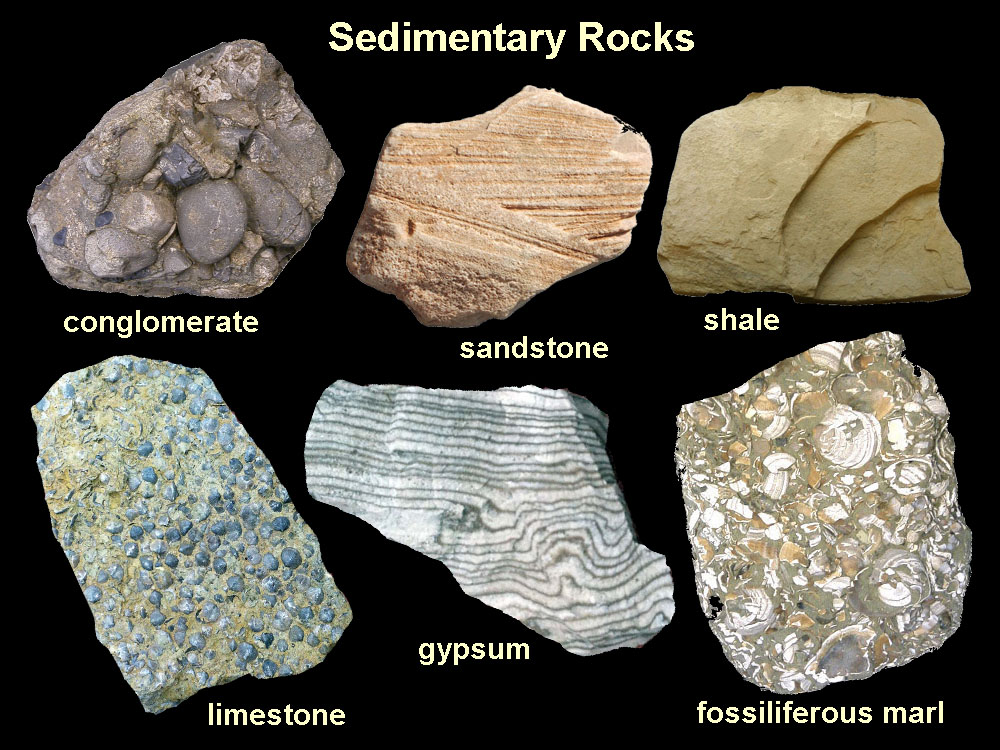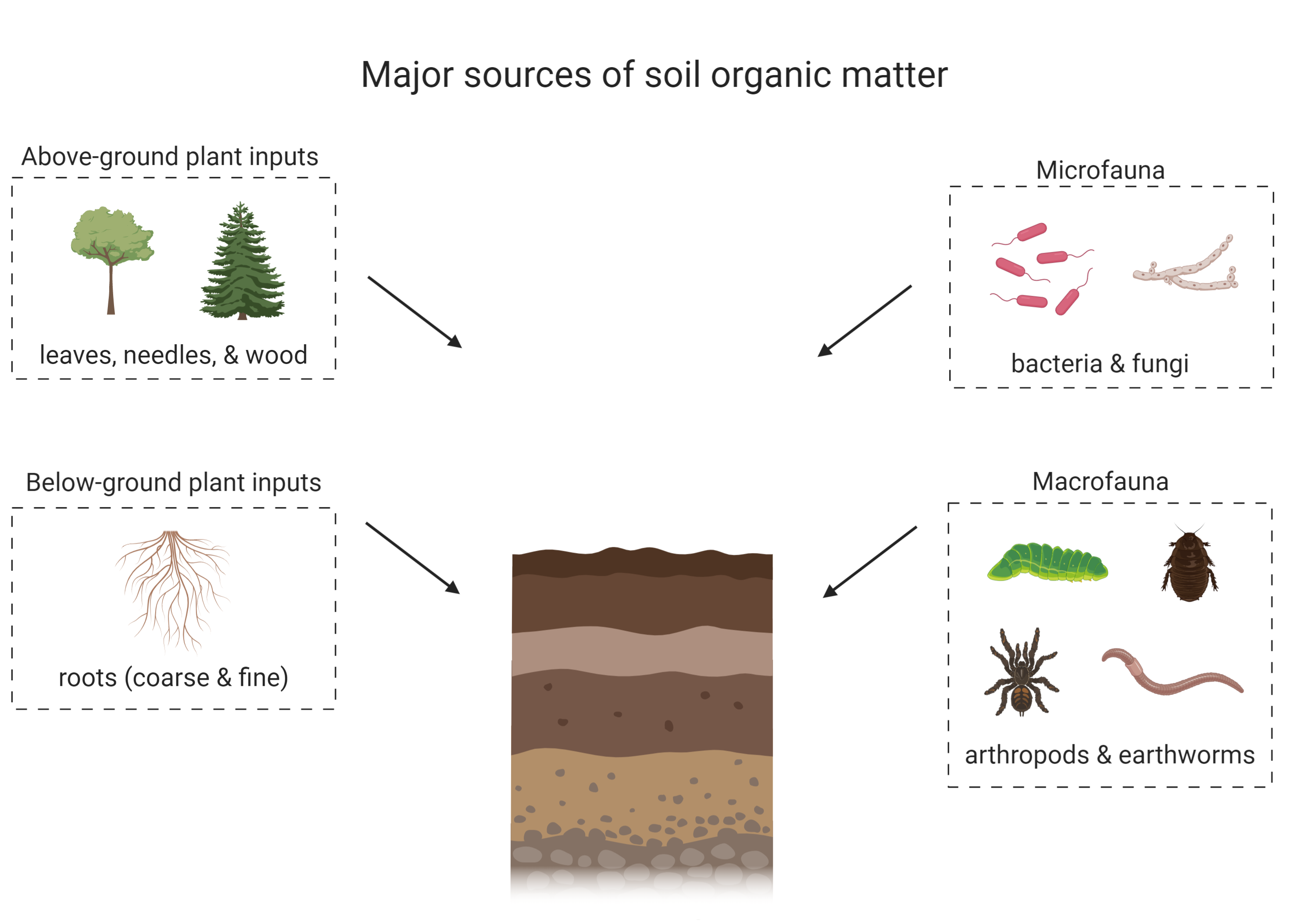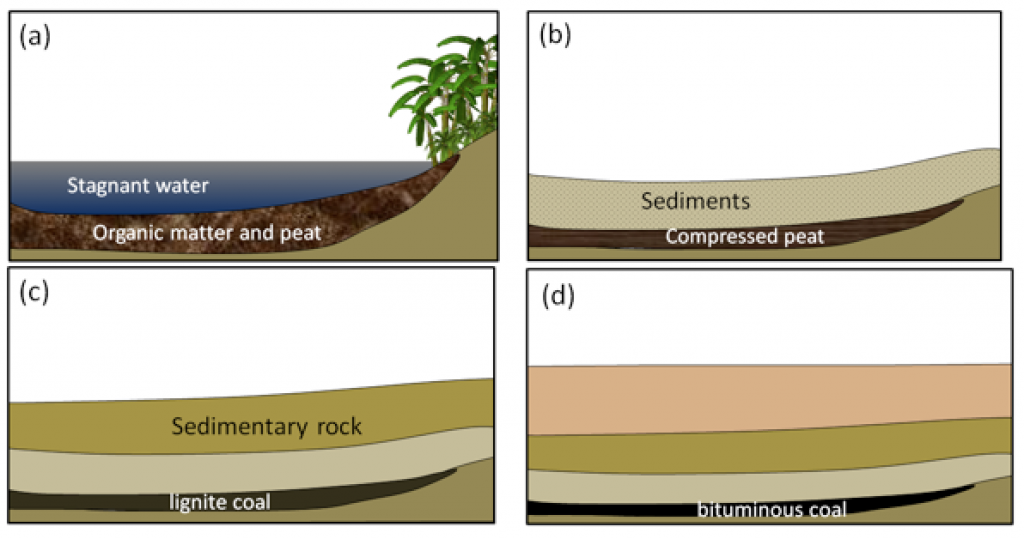Imagine you’re walking along a serene riverbank, marveling at the glistening water and the soft crunch of earth beneath your feet. That earth, sand, or mud you’re stepping on? That’s sediment—a natural storyteller that reveals tales of the environment, climate, and even human activity. But here’s the million-dollar question: Is sediment organic or inorganic? The answer isn’t as straightforward as you might think, but it’s packed with fascinating insights into nature’s processes.
Sediment, in its simplest form, refers to tiny particles that settle at the bottom of water bodies or collect on land. Its origins can be organic, inorganic, or a mix of both, influenced by countless factors like erosion, weathering, and biological activity. Understanding sediment composition is crucial—not just for scientists, but for anyone interested in ecosystems, agriculture, or even the health of our waterways.

What is Sediment?
Sediment might seem mundane at first glance, but it’s anything but. This humble mixture of materials plays a critical role in shaping landscapes, nourishing ecosystems, and recording Earth’s history. To truly understand whether sediment is organic or inorganic, let’s start by defining what sediment is and where it comes from.
Definition of Sediment
Sediment refers to particles of material that are transported and deposited by wind, water, or ice. These particles can be as small as clay or as large as boulders, and they vary widely in composition. Sediment can originate from rock erosion, volcanic activity, or decaying plant and animal matter.
A good way to think of sediment is as nature’s recycling system. Rocks break down into smaller pieces, and organic matter decomposes. These remnants then settle to form layers of sediment, often serving as the foundation for soil, habitats, and even geological formations.
Sources of Sediment
Sediment doesn’t just appear out of nowhere—it has many sources, both natural and human-made. Let’s break it down:
Natural Sources:
- Erosion and Weathering
Rocks exposed to wind, water, and temperature changes break apart into smaller fragments over time. - Biological Activity
Plants shed leaves, and animals contribute organic material through decay. - Volcanic Activity
Ash and lava fragments add inorganic particles to the mix.
Human Contributions:
- Agricultural Practices
Tilling the land loosens soil, which can be carried away by rain. - Urban Development
Construction and deforestation increase runoff, adding to sediment loads in rivers. - Industrial Waste
Factories sometimes release particles into nearby waterways.
Each source contributes to a sediment’s unique composition, making every patch of sediment a blend of Earth’s processes.

Organic vs. Inorganic Sediment: Key Differences
Now that we’ve uncovered what sediment is and where it comes from, let’s dig deeper into the heart of the matter: is sediment organic or inorganic? The answer lies in understanding the characteristics and origins of each type. Spoiler alert: it’s often a mix of both!
What Makes Sediment Organic?
Organic sediment is composed of material derived from living organisms—plants, animals, or microbes. This type of sediment is essentially nature’s compost pile, rich in biological leftovers that contribute to the Earth’s carbon cycle.
Key Characteristics of Organic Sediment:
- Composition: Organic sediment is rich in carbon-based compounds like lignin, cellulose, and proteins.
- Sources: Includes decayed plant material, animal remains, and microscopic organisms like algae.
- Appearance: Often dark, rich in color due to high organic matter content.
- Texture: Tends to be softer and more crumbly compared to inorganic sediment.
Examples of Organic Sediment:
- Peat in Wetlands: Formed from partially decayed plant matter in waterlogged environments.
- Detritus in Streams: Leaf litter and small organisms that accumulate in riverbeds.
- Marine Sediments: Dead plankton and other oceanic organisms that settle to the seafloor.
Organic sediment is essential for life—it serves as a nutrient reservoir and supports ecosystems. For instance, fertile soils owe their richness to the organic sediment mixed within them.
What Makes Sediment Inorganic?
On the flip side, inorganic sediment is composed of mineral particles that originate from non-living sources. These materials are formed through geological processes like weathering and erosion, and they lack the carbon compounds found in organic sediment.
Key Characteristics of Inorganic Sediment:
- Composition: Made of minerals such as quartz, feldspar, and clays.
- Sources: Comes from eroded rock, volcanic ash, and mineral deposits.
- Appearance: Typically lighter in color, varying based on the dominant minerals.
- Texture: Can range from fine clay to coarse sand or gravel.
Examples of Inorganic Sediment:
- Beach Sand: Primarily quartz grains shaped by ocean waves.
- River Silt: Fine particles carried by streams and rivers.
- Glacial Deposits: Rock fragments left behind as glaciers melt.
Inorganic sediment plays a significant role in shaping the physical landscape. Think of dramatic canyons carved by rivers or sandy beaches formed by wave action—all thanks to inorganic sediment.
How to Identify Organic and Inorganic Sediment?
Not sure whether that handful of dirt is organic or inorganic? Here are some simple methods to tell them apart:
1. Visual Inspection:
- Dark and crumbly? Likely organic.
- Light and granular? Probably inorganic.
2. Float Test:
- Organic material tends to float due to lower density, while minerals sink.
3. Chemical Testing:
- Add a drop of vinegar or dilute acid—if it fizzes, the sediment likely contains inorganic carbonate minerals.
4. Lab Analysis (For the Curious Scientist):
- More advanced methods include carbon analysis to quantify organic content or mineralogical studies for inorganic materials.
Understanding these differences not only satisfies curiosity but also aids in environmental management, agriculture, and geological studies.

Factors Influencing Sediment Composition
Sediment doesn’t exist in a vacuum (unless you’re studying Mars). Its composition is shaped by a variety of environmental and human factors. From climate to human activity, these influences determine whether sediment leans more organic, inorganic, or strikes a balance between the two.
Environmental Conditions
Nature is the ultimate artist when it comes to crafting sediment. Climate, geology, and vegetation all play pivotal roles in determining the type and mix of sediment found in a region.
- Climate:
Wet climates encourage the growth of vegetation, leading to more organic sediment. Conversely, arid regions with minimal plant life produce predominantly inorganic sediment, like sand dunes.- Example: Tropical rainforests generate organic-rich soil, while deserts like the Sahara are dominated by inorganic sand.
- Geology:
The type of bedrock in an area influences the minerals present in sediment. Granite-rich regions produce quartz-dominated sediment, while limestone areas contribute calcium carbonate particles. - Vegetation:
Dense forests contribute organic material like leaves and roots to sediment, while grasslands offer less organic input. Coastal areas with mangroves often generate unique mixes of organic and inorganic sediment.
Human Activities
Humans have a knack for altering nature’s course, and sediment composition is no exception. Agriculture, urbanization, and industrial practices significantly impact the sedimentation process.
- Agriculture:
Plowing fields exposes soil to wind and water erosion, increasing inorganic sediment runoff. However, crop residue and fertilizers can add organic material.- Case Study: The Mississippi River carries sediment from farmland in the Midwest, creating fertile deltas downstream.
- Urbanization:
Construction activities and paved surfaces reduce organic material while increasing inorganic runoff, such as sand, gravel, and pollutants. - Deforestation:
Removing trees reduces organic input and exposes soil to erosion, leading to sediment with a higher inorganic content. - Industrial Pollution:
Factories release particulates that can end up in sediment, often with harmful effects.
Natural Processes
Mother Nature doesn’t just create sediment; she moves it around like a master curator. Processes like erosion, deposition, and biological activity continuously alter sediment composition.
- Erosion:
Wind, water, and glaciers transport minerals from one place to another, often stripping organic material along the way. - Deposition:
Where sediment settles depends on its weight and size. Organic sediment often collects in still waters like lakes and wetlands, while inorganic particles dominate fast-moving rivers. - Biological Activity:
Animals and plants contribute to sediment through decay, burrowing, and other natural activities. For example, coral reefs generate organic sediment through the breakdown of coral skeletons.
| Factor | Organic Sediment | Inorganic Sediment |
|---|---|---|
| Climate | Wet climates → more organic input | Dry climates → inorganic particles |
| Vegetation | Forests → organic-rich layers | Grasslands → thinner organic layers |
| Human Impact | Agriculture adds organics | Urbanization increases inorganics |
| Natural Processes | Decay increases organic matter | Erosion favors inorganic transport |
These factors create a dynamic system where organic and inorganic materials intermingle, creating diverse sediment profiles across the globe.

Why Does It Matter if Sediment is Organic or Inorganic?
Sediment might not be the flashiest subject, but its composition—whether organic, inorganic, or a mix—has profound implications for the environment, geology, and even human well-being. Understanding this distinction helps us address challenges in ecosystems, agriculture, and resource management.
Environmental Impacts
Sediment plays a pivotal role in the health of ecosystems, particularly aquatic environments. The balance of organic and inorganic material affects water quality, habitats, and nutrient cycling.
- Water Quality:
- Organic sediment can improve water quality by providing nutrients for aquatic plants and microorganisms. However, too much organic matter can lead to oxygen depletion as it decomposes, creating dead zones.
- Inorganic sediment can cloud water, reducing sunlight penetration and disrupting photosynthesis in aquatic plants.
- Ecosystem Dynamics:
- Organic sediment is crucial for ecosystems like wetlands, where it supports biodiversity and nutrient cycling.
- In contrast, excessive inorganic sediment from erosion can smother habitats, such as coral reefs and fish-spawning areas.
- Carbon Cycling:
Organic sediment acts as a carbon sink, locking away carbon that would otherwise contribute to climate change. Peatlands, for example, store massive amounts of organic carbon, making them vital for mitigating global warming.
Geologic Significance
The composition of sediment also tells us about Earth’s past and shapes its future. Sediment layers are like pages in a history book, recording changes in climate, tectonics, and life over millions of years.
- Landform Creation:
- Inorganic sediment, like sand and gravel, forms striking landforms such as dunes, river deltas, and beaches.
- Organic sediment contributes to soil formation, fostering fertile landscapes for agriculture and forests.
- Fossil Preservation:
- Organic sediment is often the medium in which fossils are found. Decayed plants and animals buried in sediment layers give scientists clues about ancient ecosystems.
- Erosion and Deposition:
- The movement of inorganic sediment carves canyons and builds alluvial plains, reshaping Earth’s surface.
Practical Applications
Understanding sediment composition isn’t just academic—it has real-world benefits for industries, agriculture, and environmental conservation.
- Soil Fertility:
- Farmers need a balance of organic and inorganic sediment in soil to maximize fertility. Too much inorganic material can lead to poor drainage, while excessive organic matter can create overly acidic soils.
- Sediment Management:
- Civil engineers and environmentalists manage sediment to prevent issues like river siltation, which can disrupt navigation and water flow.
- Organic sediment in water treatment systems can help remove pollutants naturally.
- Land Reclamation Projects:
- In regions like the Netherlands, sediment (both organic and inorganic) is used to reclaim land from the sea.
Case Study: Sediment and the Chesapeake Bay
The Chesapeake Bay, one of the largest estuaries in the United States, illustrates why sediment composition matters.
- Problem: Increased runoff from urban and agricultural sources has overwhelmed the bay with sediment. The inorganic particles cloud the water, while excessive organic material contributes to algal blooms and oxygen depletion.
- Solution: Conservation efforts, like riparian buffers and wetland restoration, help reduce sediment inflow, restoring the balance between organic and inorganic materials.
Understanding whether sediment is organic or inorganic isn’t just a scientific curiosity—it’s essential for tackling environmental challenges, preserving biodiversity, and ensuring sustainable development.

How Sediments Are Studied
Studying sediment is like detective work, uncovering clues about its composition, origin, and movement. Researchers use a variety of tools and techniques to analyze sediment, revealing its secrets and helping us manage its impact on the environment and human activities.
Tools and Techniques for Sediment Analysis
From basic sampling methods to high-tech laboratory tests, sediment analysis spans a wide range of approaches.
- Sediment Sampling:
Collecting sediment samples is the first step in understanding its composition.- Grab Samplers: Tools like dredges or scoops are used to gather surface sediment from lakes, rivers, or the ocean floor.
- Core Sampling: A cylindrical tube is driven into the sediment to collect a vertical column. This method preserves sediment layers, providing insights into historical changes.
- Laboratory Analysis:
Once sediment is collected, it undergoes rigorous testing to determine its properties:- Organic Content Tests: Techniques like loss-on-ignition (LOI) involve heating sediment to measure the organic matter percentage.
- Particle Size Distribution: Sieving or laser diffraction determines the size range of sediment particles (e.g., sand, silt, clay).
- Mineral Composition Analysis: X-ray diffraction (XRD) identifies the minerals present in inorganic sediment.
- Carbon Analysis: Helps quantify organic carbon content, crucial for studies on carbon cycling.
- Sediment Tracing:
- Markers like isotopes or unique mineral compositions help track sediment movement and source locations.
Role of Technology in Sediment Studies
Advances in technology have revolutionized the study of sediment, making it easier to collect, analyze, and visualize data.
- Remote Sensing and GIS Mapping:
Satellite imagery and Geographic Information Systems (GIS) are used to monitor sediment transport in rivers, coastal zones, and other environments.- Example: NASA uses satellite data to study sediment plumes in the Amazon River, which flow into the Atlantic Ocean.
- Acoustic Profiling:
Sonar systems map underwater sediment layers by measuring how sound waves bounce off the seabed. This technique is vital for understanding sedimentation in reservoirs, ports, and oceans. - Advanced Microscopy:
High-resolution microscopes allow researchers to observe fine details of sediment particles, such as their shape and surface texture. - Modeling Software:
Sediment transport models simulate how particles move in response to environmental factors like water flow, wind, or human activities.
Applications of Sediment Studies
Studying sediment is not just for academic curiosity—it has tangible applications across various fields.
- Environmental Monitoring:
Sediment studies are essential for assessing pollution levels in rivers, lakes, and oceans. Organic contaminants, like pesticides, often attach to sediment particles. - Archaeology and History:
Ancient sediment layers can reveal details about past climates, ecosystems, and human activity.- Example: Sediment cores from the Dead Sea have provided insights into historical droughts and their impact on civilizations.
- Engineering and Construction:
Engineers study sediment to design infrastructure like dams, bridges, and ports. Understanding sediment dynamics ensures structures are safe and sustainable.
A Quick Glance: Tools and Their Purposes
| Tool/Technique | Purpose |
|---|---|
| Grab Samplers | Surface sediment collection |
| Core Sampling | Historical analysis of sediment layers |
| X-ray Diffraction (XRD) | Mineral identification |
| Remote Sensing & GIS | Large-scale sediment tracking |
| Acoustic Profiling | Mapping underwater sediment |
By combining hands-on sampling, advanced technology, and interdisciplinary collaboration, sediment studies provide valuable insights into environmental health, geological processes, and human impacts. These findings help guide conservation efforts, resource management, and scientific discovery.